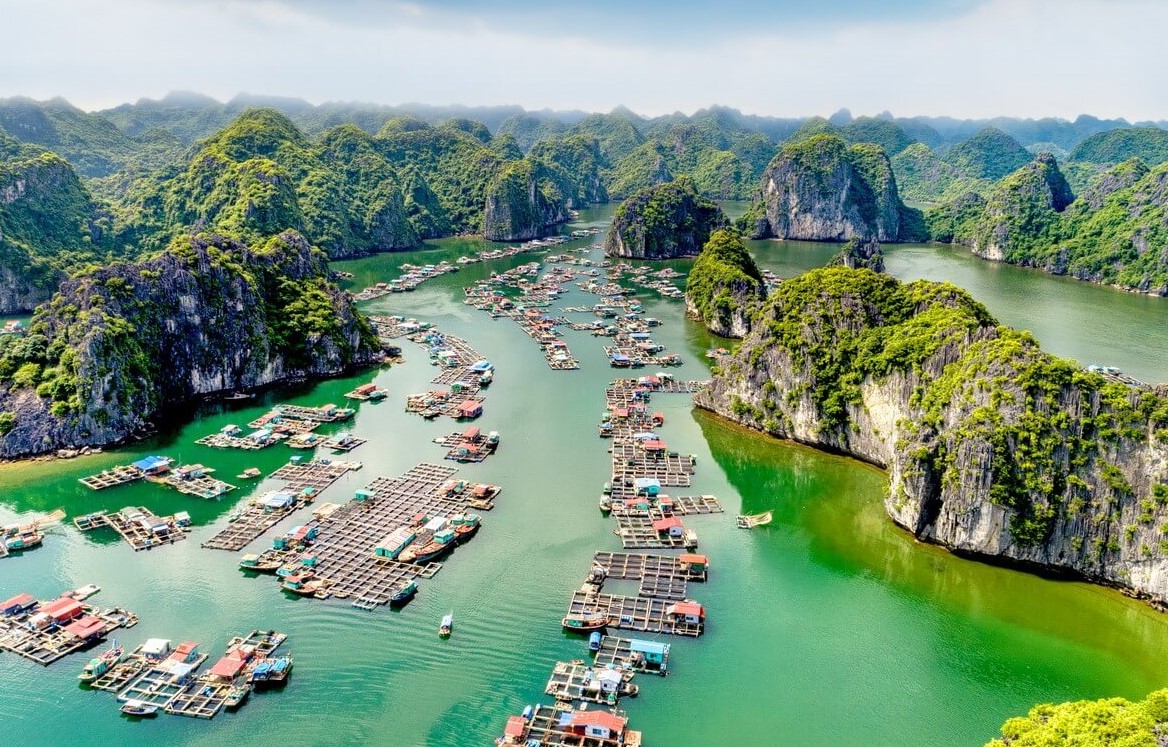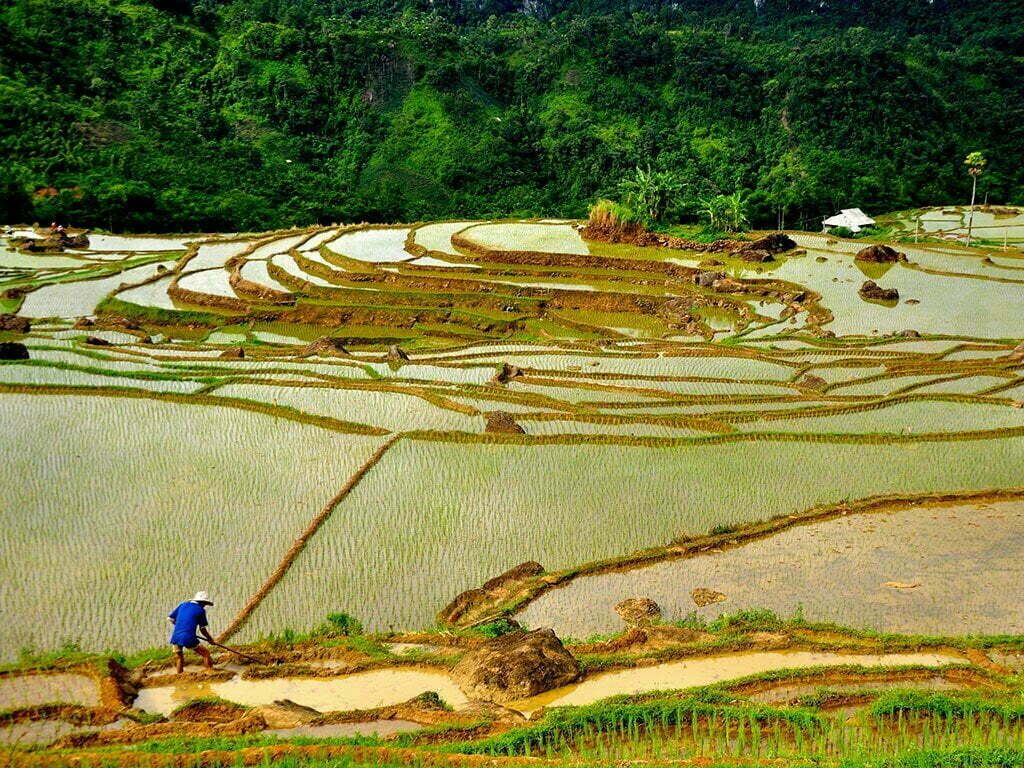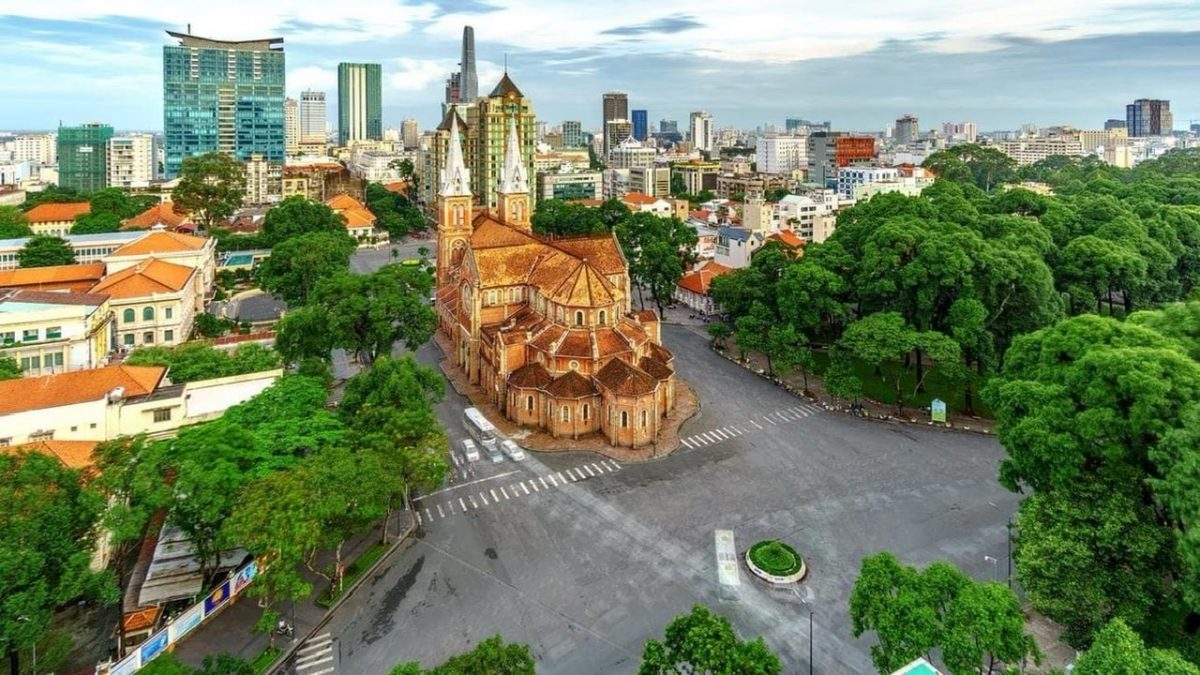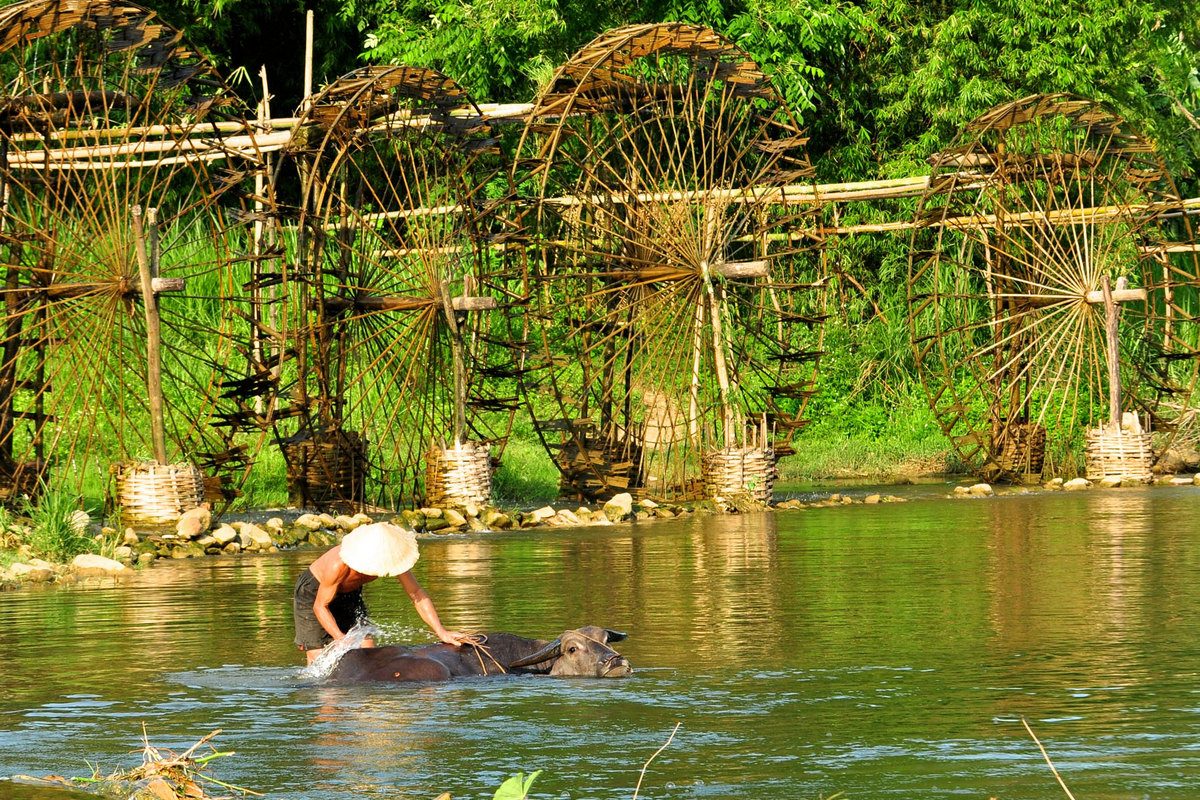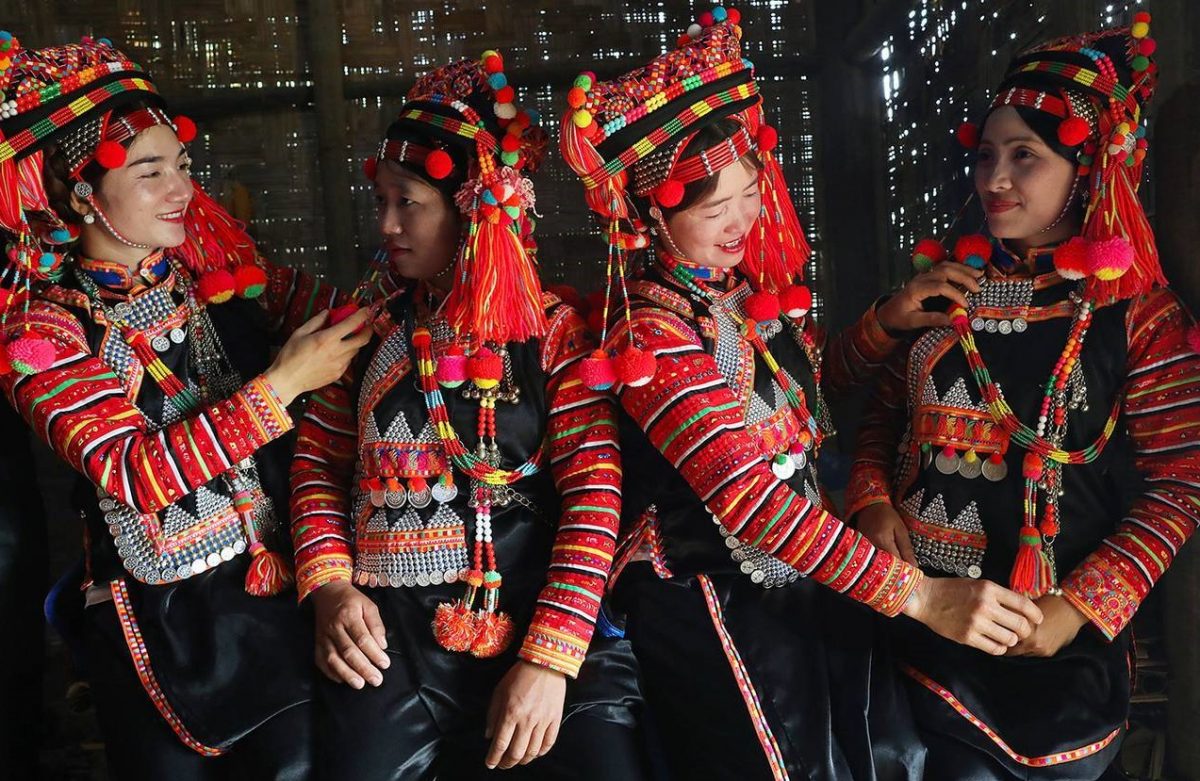Everything you need to know about Hue
17/04/2024Huế is located in central Vietnam, on the banks of Song Huong (Perfume River). Hue City is the capital of Thua Thien Hue – a coastal province which shares borders with Quang Tri Province to the north, Quang Nam Province and Da Nang to the south, Laos to the west and the East Sea to the east. It is 700km southern Hanoi and 1100km northern Ho Chi Minh City.
Hue was the capital of Đàng Trong Kingdom from 1738 to 1775 and of the Nguyen Dynasty from 1802 to 1945. Most well-known for its poetic landscapes, a tranquil atmosphere, religious traditions, hundreds-year-old historic architecture, Hue had been recognized as one of the World Heritage Sites by UNESCO. If you are going to visit Hue. Here are the everything you need to know about Hue.
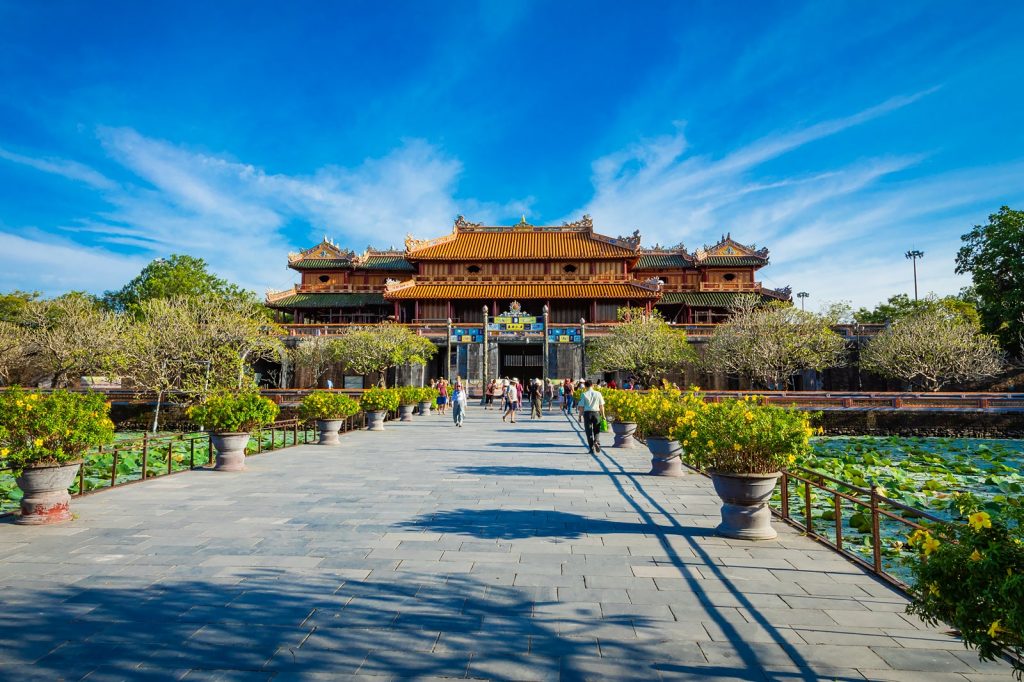
When is the best time to visit Hue?
Hue’s weather features a tropical monsoon climate with 4 seasons: spring, summer, autumn, and winter.
– From mid of January to April: The average temperature during spring is around 22°C~25°C. It is dry and less humid from February to April, making this period the most pleasant time of the year to enjoy outdoor activities. The months are spring season from February to April: The best time to visit Hue.
– From May to August: In the summertime in Hue city, the temperatures average 30°C~38°C. During the dry season with high humidity, indoor activities are favorable, such as visiting temples, museums, and traditional market. The months June and July are summer of the year. The weather is hot. The temperature of 30 degrees. It is uncomfortable for tourists.
– From mid of August to September: The temperatures drop to around 18°C~20°C, and rains start falling in autumn. This rainy season is preferable for travelers who want to avoid the crowd in peak seasons.
– From October to December: Flood and rainfall tend to occur frequently at the end of the year. This flood season is not the best time to visit Hue.
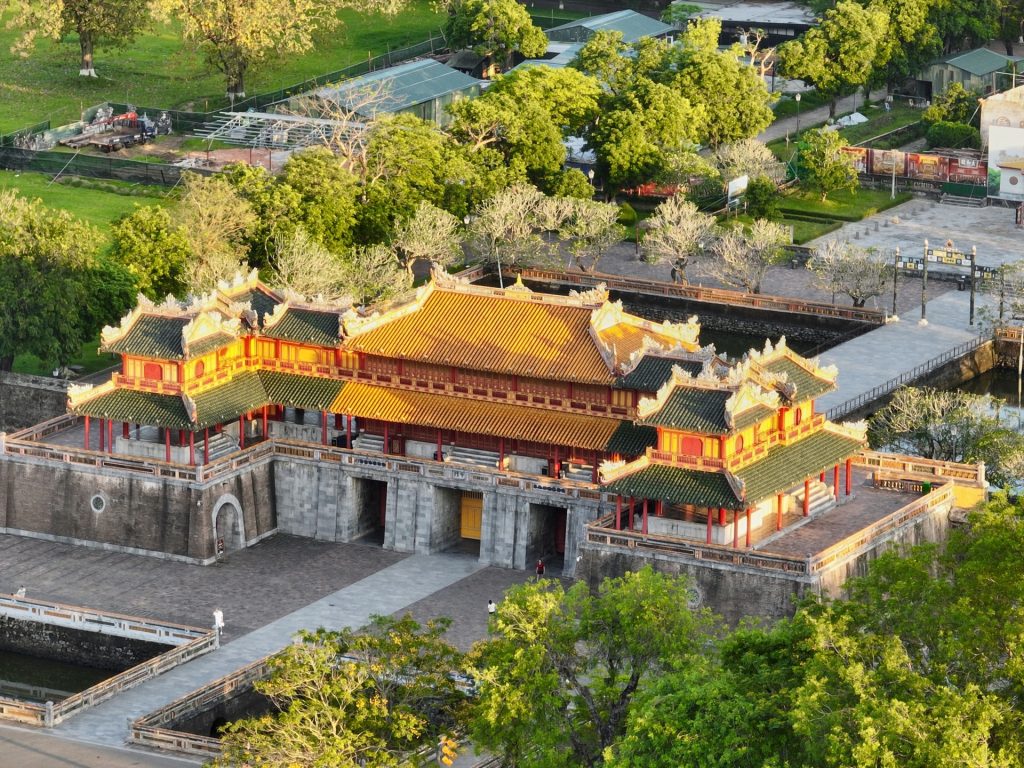
How to get to Hue City?
Hue is located in the center of Vietnam. Thua Thien Hue affords a convenient transportation system with Phu Bai International Airport, Thuan An Port, Highway 1A, and the trans-Vietnam train. It is easy to travel to Hue from Ho Chi Minh City(1100 kilometers to the south), Hanoi (700 kilometers to the north), or the nearby Da Nang City (about 100 kilometers away) by the following means of transportation:
– By Airplane: There are regular domestic flights from Ho Chi Minh City or Hanoi to Hue’s Phu Bai Airport (HUI). Then, you can catch a taxi from Phu Bai Airport to reach Hue City center (about 15 kilometers away).
– By Train: Hue is an express stop on the main north-south railway line that connects Hanoi and Ho Chi Minh City. It would be an unforgettable journey to Hue when you pass the spectacular scenery on overnight trains with air-conditioned compartments, soft seats, and comfortable sleeping beds at reasonable prices.
– By Bus: If you take a bus, it is longest but cheapest way to get to Hue from Da Nang (2.5 hours), Hanoi (13 hours), or Ho Chi Minh City (25 hours).
– By motorbike (not advice): From Da Nang City, you can take a 3-hour ride to Hue by following the coastal road of National Highway 1, which passes through the scenic Hai Van Pass (Hai Van Quan).
Top 13 best attractions in Hue
*** 1. Ancient architecture
Hue is former Royal Capital. These attractions you should not miss visit when you are in Hue. They will offer you a unique insight into Vietnamese antiquity. The architecture of Hue is influenced by the features of Nguyen dynasty and the Buddhist culture as well as by the special beauty of valuable French architecture. The French-style houses with nearly one hundred years old create the luxurious beauty of Hue, this makes Hue get classic Western style. Going through the time and the obstacles of the war, the French buildings still preserve precious cultural values and the history.
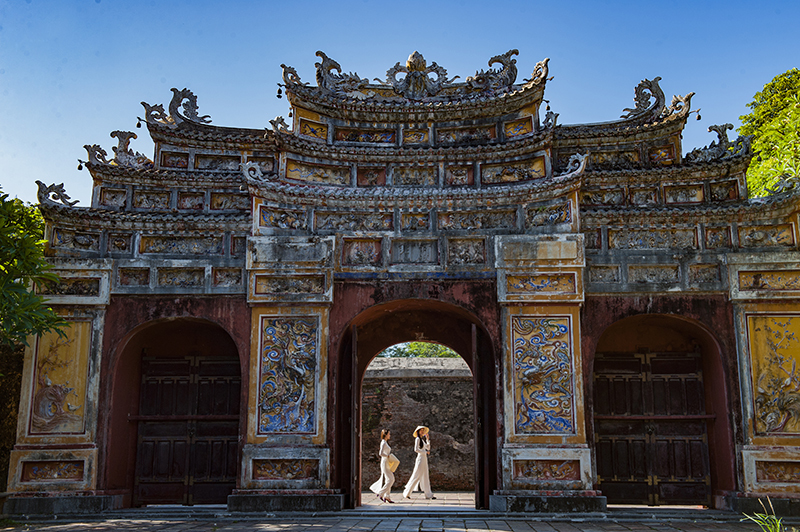
***2. Emperors Tombs
Encompassed in the Complex of Hue Monuments, the ancient mausoleums of the Nguyen Emperors are must-see destinations in Hue, Vietnam. These lavish “homes of the other world” of emperors represent the Eastern beliefs in the afterlife and the peak of Vietnamese imperial architecture with a perfect Feng Shui layout. Among the seven extant regal mausoleums, Khai Dinh Tomb, Tu Duc Tomb, Minh Mang Tomb and Dong Khanh Tomb are frequently visited thanks to their good condition and convenient location.The tombs mostly date from the 19th and 20th centuries and are carved to tell the stories of Buddhist legends.
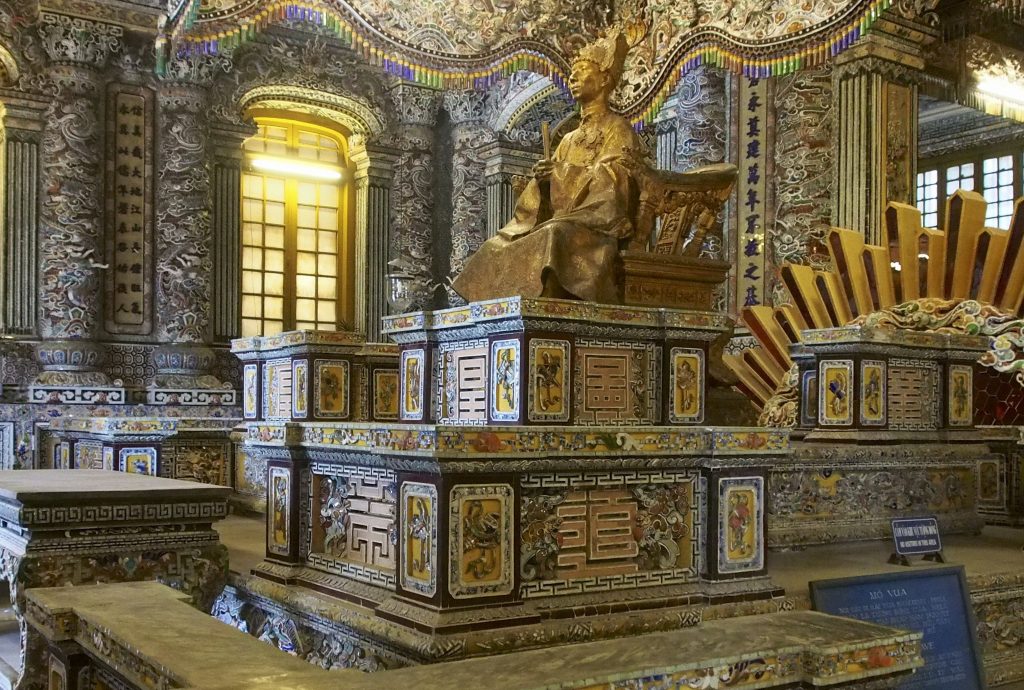
***3. The Imperial Citadel
The Imperial City (in Vietnamese is Hoàng thành) is a walled enclosure within the citadel (Kinh thành) of the city of Huế, the former imperial capital of Vietnam.
Hue Imperial City, about 520 hectares in size, includes 3 main sections: Hue Citadel (Kinh thành Huế) – a square fortress of 10 kilometers in circumference that encloses the entire compound; Royal City (Hoàng thành Huế or Đại Nội) – the bureaucratic center and workplace of emperors, mandarins, and soldiers; lastly, Forbidden Purple City (Tử cấm thành Huế) – an exclusive residence for emperors, royal families, and eunuchs.
The architecture vividly depicts the imprint of Oriental philosophy and Vietnamese feudal patterns. Its elaborate exterior is aligned symmetrically and incorporated into the Five Elements (earth, metal, wood, water, fire) and the Five Colors (yellow, white, blue, black, red). The auspicious site of Hue Imperial City also indicates the harmony of nature between the Ngu Binh Mountain and the Perfume River. According to geomancy, this natural setting has symbolic importance in bringing good omens to the empire and warding off malevolent spirits.
All these sophisticated designs had created magnificent landscapes and great solemnity for Hue Imperial City, demonstrating the ultimate power of the last Vietnamese dynasty.
Visiting Imperial Citadel and walking around you can admire the moats, carved carved gates and royal pavilions, and there are also a clutch of engaging museums on the grounds.
*** 4. Admire the Thien Mu Pagoda
The Thiên Mụ Pagoda (meaning Temple of the Celestial Lady, Vietnamese: Chùa Thiên Mụ) is a historic temple in the city of Huế in Vietnam. Its iconic seven-story Phước Duyên pagoda is regarded as the unofficial symbol of the city and the temple has often been the subject of folk rhymes and ca dao about Huế
The Thien Mu Pagoda sits on the Hà Khê hill, in the ward of Hương Long in Huế. It is around 5 kilometres from the Citadel of Huế constructed by the Nguyễn lords and sits overlooking the Perfume River. It is well known in Vietnam. It is the symbol of Hue which dates from the 17th century. From Pagoda you can take in beautiful views over the city from this spot. The pagoda is the perfect combination of artificial architectural work and picturesque nature.
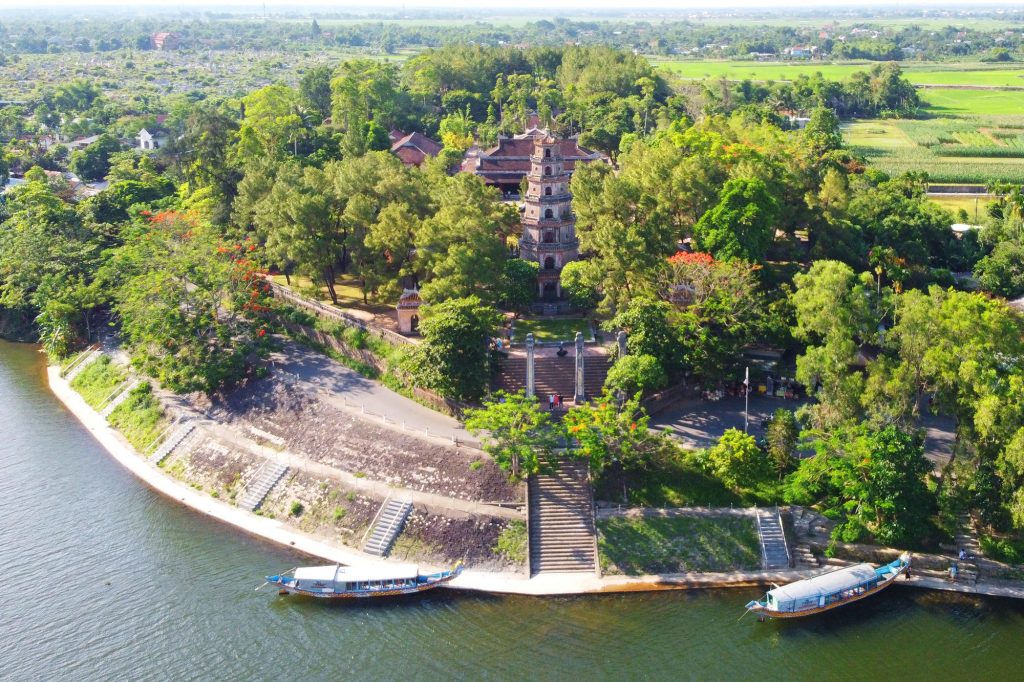
*** 5. Walk along the Perfume River
The Perfume River (Hương River) and facing Trang Tien Bridge, Nguyen Dinh Chieu Pedestrian Street are the famous places in Hue. They are the first official walking street in Hue Vietnam. Walking along the banks of the river in the evening, you will admire the Fantastic Hue nightlife.
Hue walking streets are the ideal spots favored by foreign and local sightseers. These walking streets hold a unique enchantment of long-standing tradition, modern lifestyle, shop for hand-made keepsakes, watch delightful street performances and enjoy the fresh air and panoramic river view. You can also spend your time on the dragon boats on the Perfume River and listening to the live Hue Royal Court Music – the first-ever UNESCO-recognized intangible cultural heritage of Vietnam.
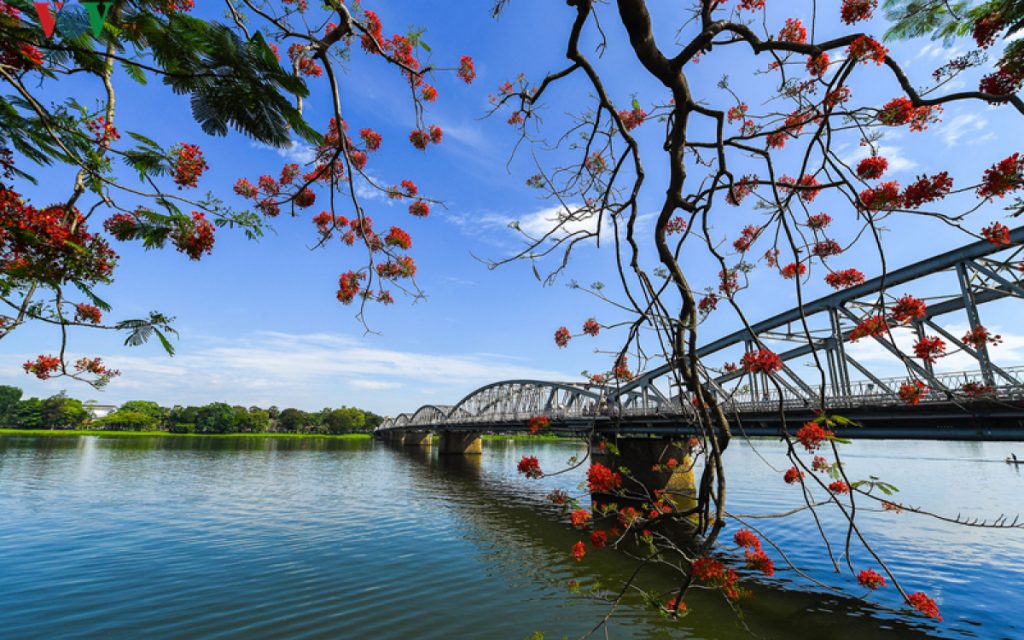
***6. Local Cuisine
Hue foods are not only famous for the way they are prepared but also for their meticulous decoration. Each dish is like a work of art with a sophisticated appearance, rich flavors, and substantial health benefits.
Hue cuisine is so humble. Maybe that’s the way everything in this ancient city is: unhurried, simple but authentic.
When it comes to royal foods, it’s the beautifully decorated dishes which are made from high quality ingredients. These foods were used to serve the royal family. In terms of local foods, the possibilities are endless.
The popular food is bánh nậm, bánh bột lọc, bún bò huế, cơm hến, bún bò huế, bánh khoái… Many restaurants in Hue serve these traditional style. You can enjoy a meal that unfolds over multiple courses. It is value for money.
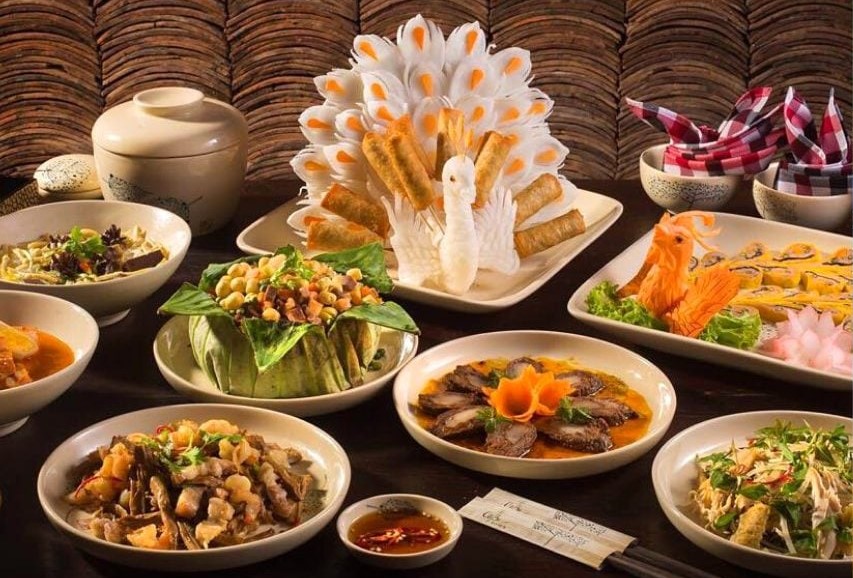
*** 7. The beaches
There are two beautiful beaches in Hue, you should not miss when you visit Hue.
– The 1st beach is Lang Co Beach. It located between Da Nang and Hue City, just 24 kilometers from Bach Ma National Park. The beach lies at the northern and of Hai Van Pass. Situated in one of the finest bays in the world – Lang Co Bay, this Hue beach stretches over 8 kilometers with palm-shaded white sand, crystal-blue seawater, and stunning scenery covered by a tropical forest. Besides, Lang Co Beach has abundant mouth-watering fresh seafood prepared in rich Vietnamese flavors, such as cuttlefish, oysters, crabs, and lobsters which will surely satisfy your craving for fine sea cuisine. Lang Co Beach is a favorite stop for sea lovers traveling between Hue and Danang.
– The 2nd beach is Thuan An Beach. It is located 14 km from center. Thuan An is a brilliant stretch of white to off-yellow sand, ideal for a swim in the sea.
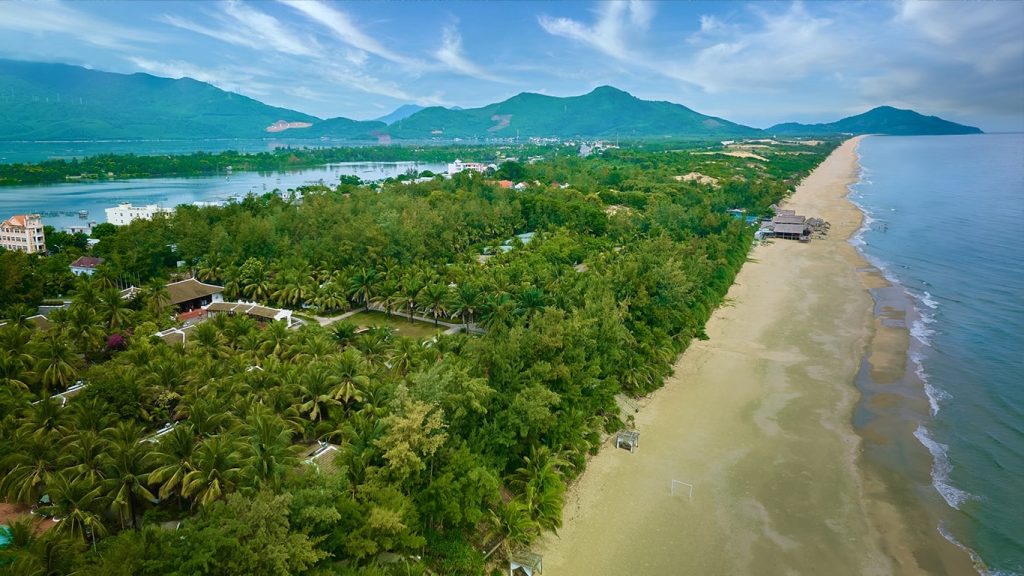
*** 8. Soak in the Alba Thanh Tan Hot Springs
Alba Thanh Tan Hot Springs is located at the foot of the Truong Son Mountains, 30km North of the imperial City. It is famous relaxing getaway. It offers the idea setting for a true wellness escape. Bathing in Alba mineral water nourishes and energizes the body. It promotes a feeling of mental and physical wellbeing, helps to eliminate harmful toxins and enhances the overall rejuvenation process.
There are also other quirky activities on offer here such as a high wire and a zip line, or you can play water games in the aqua park.
9. Cycle around the city
Hue is might be one of the greatest city for cycling in Vietnam. The city offers easy, fun bike ride as cycling is flat, and mostly on the back roads, countryside, less busy traffic roads. Making cycling around the city much safer and more enjoyable. Many visitors prefer to ride their bicycles to the Citadel along the Huong River’s banks or to a variety of temples that may be found a short distance from the city center.
If you are an enthusiast cyclist, you can venture out of the city into the tranquil countryside. As you drive through locations where few other visitors go, it’s an incredibly relaxing and real-life experience. Just right outside the city center, you can easily and quickly get to the countryside, especially on a bike.
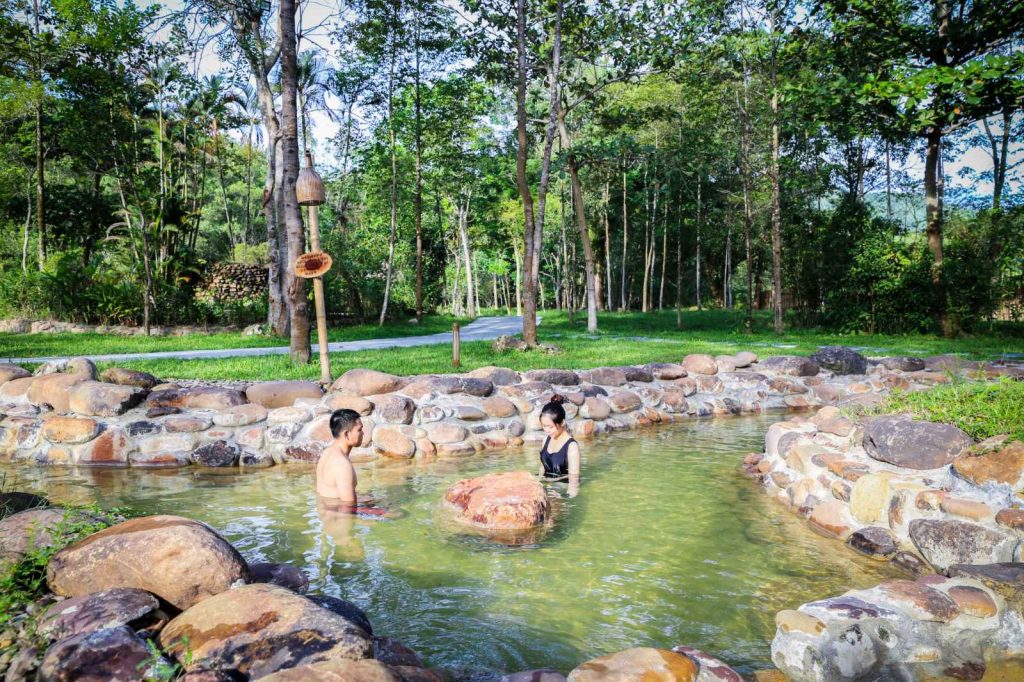
*** 10. Walk across the Thanh Toan Bridge
Thanh Toan Bridge is about 8km from Hue city to the east in Thanh Thủy Village. It is recognized as a National Cultural Monument in 1990. Thanh Toan is a 250-year-old wooden arched bridge with tile-roofed bridge (18.75 meters in length and 5.82 meters in width) retains its rustic charms with high artistic and historical values. This Hue ancient bridge also offers sightseers delightful hands-on experiences to explore the authentic Vietnamese countryside lifestyle through traditional games, festivals, and vending activities.
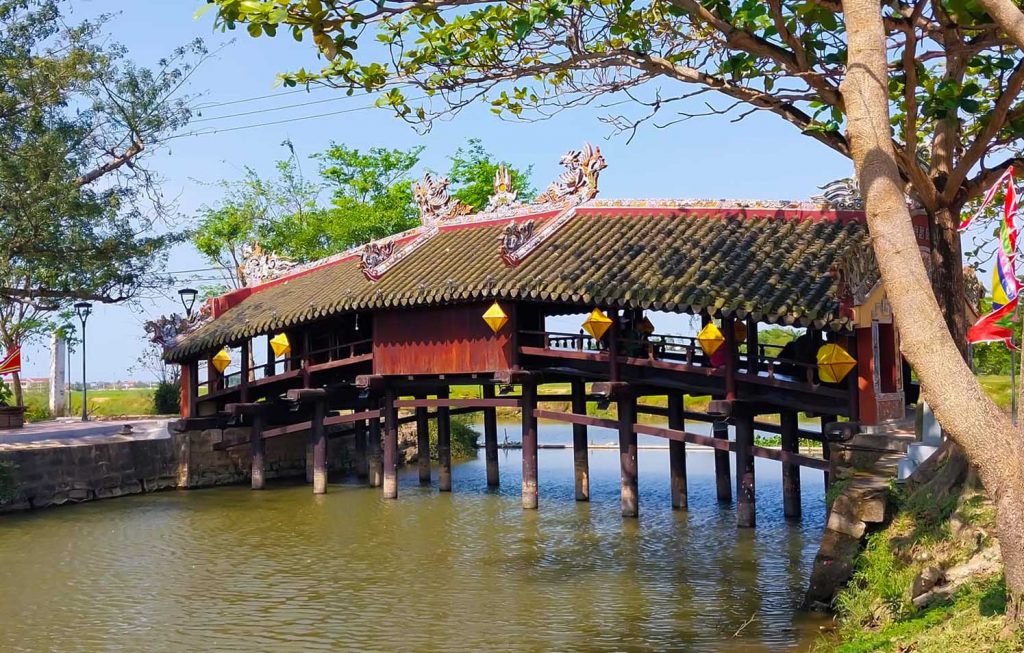
*** 11. Dong Ba Market
Dong Ba Market is the oldest and largest Hue market (16,000 square meters), located just north of Trang Tien Bridge and about 1 kilometer east of the Imperial City. It has been a significant part of the city since its establishment, selling everything from traditional Vietnamese clothing to souvenirs, food, exotic fruits, vegetables, handicrafts, garments, and fresh groceries at wallet-friendly prices. Coming to Dong Ba Market, you can get lost in the busy everyday life of the residents and unlimited options for shopping and having delicious street food.
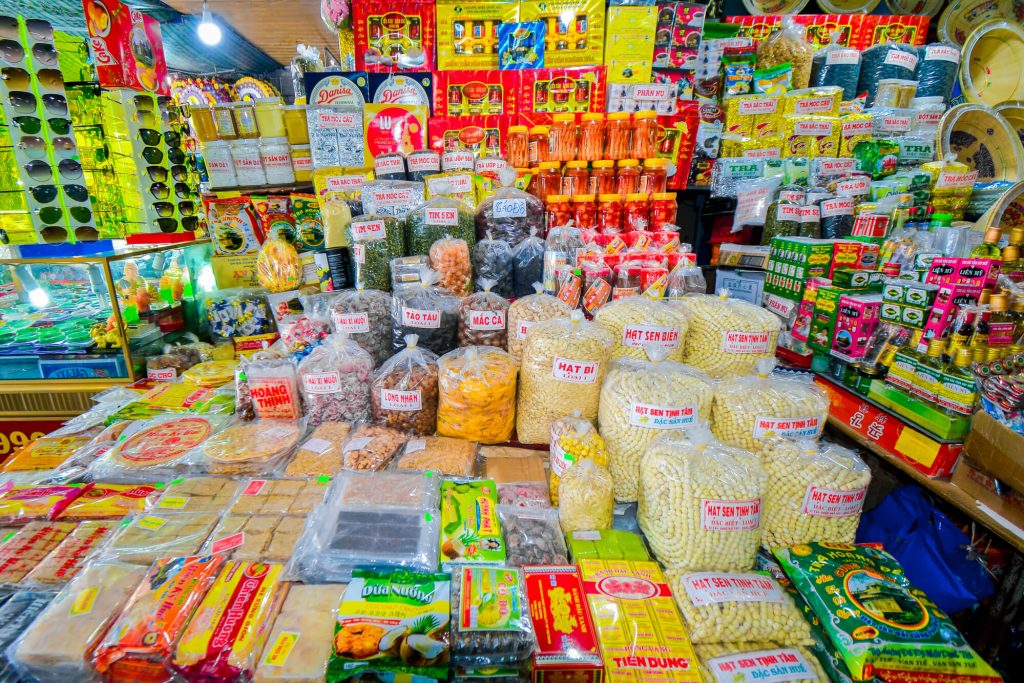
***12. Ride a dragon boat and listen to Hue songs
Hue Songs is said that this kind of performance came into beings in 17th century. It was first the performance for high class in the society, with the formal way of telling stories through singing. The singers were supported by a music band playing traditional musical instruments. Until the time of Tu Duc king ( 1848-1883), It became a popular entertainment for all people in the country.
Traveling on dragon boats to see the sights and listen to Hue songs is a pleasure that is both elegant and unique to Hue. This experience will allow visitors to touch the poetic beauty of the Huong River and the cultural beauties imbued with the spirit of the ancient capital. If you are planning to enjoy this experience, the experience of renting a dragon boat in Hue below will be a useful guide for you to have a truly enjoyable experience.
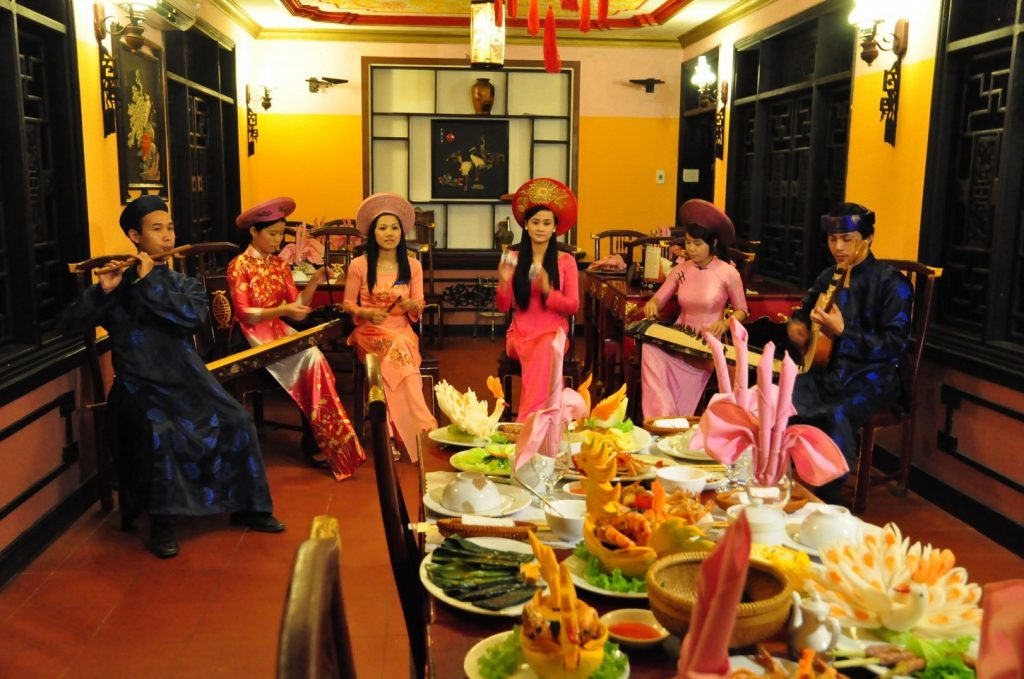
*** 13. Thuy Xuan Incense village – Hue craft villages
Thuy Xuan Incense Village dates back to 700 years ago during the Nguyen Family in Central Vietnam. In the past, the village supplied incense to the royal court and locals in the Thuan Hoa – Phu Xuan area.
Thuy Xuan villagers have incense sticks in a rainbow of colours. Walking through the village, you will find narrow streets lined with charming houses, some of which double as incense workshops. When they are placed together, clusters of incenses look like colourful flowers in full bloom. The incense sticks in Thuy Xuan Village are produced in various aromas, such as cinnamon, citronella, jasmine, but it is agarwood that makes the name for the village.
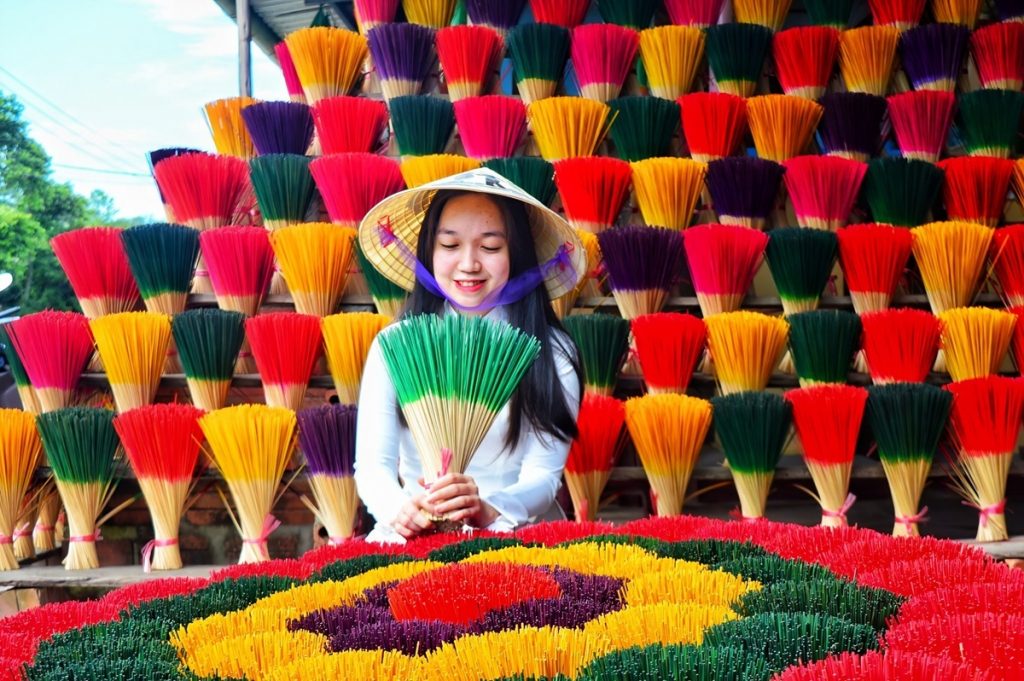
If you prefer to enjoy a tour packages to Ninh Binh from Hanoi. You can book tour with us who will take care everything from start to the end. You just set and experience by yourself.
How To Get The Cheap Vietnam Tours Packages?

